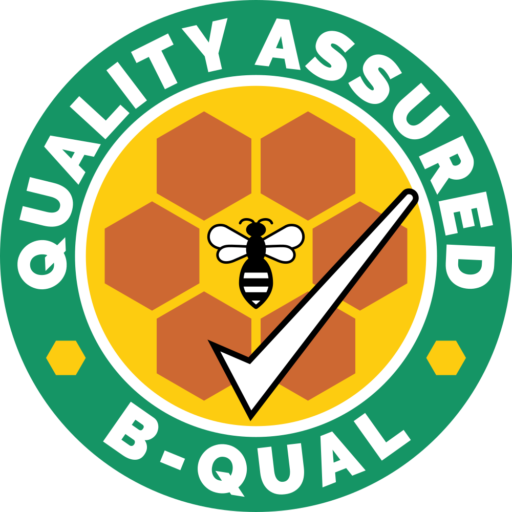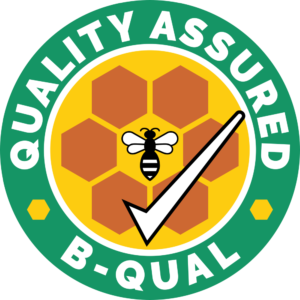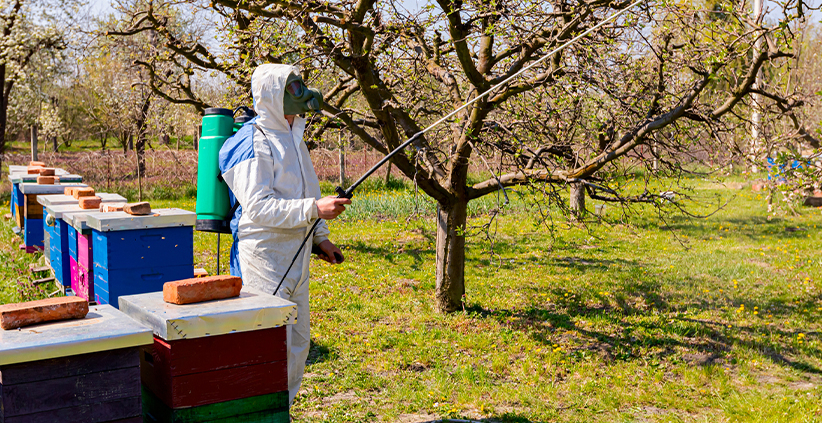Minimising Pesticide Use: Protecting Bees and the Environment
The Hidden Cost of Pest Control
In the battle to protect crops and gardens from destructive pests, one powerful ally often suffers unintended consequences—bees. Across Australia, both native and European honeybee populations face increasing threats from the widespread use of pesticides. While these chemicals may improve crop yields in the short term, they also harm pollinators vital to food production, biodiversity, and ecological balance.
For beekeepers and gardeners alike, minimising pesticide use isn’t just an environmental responsibility—it’s a practical step towards safeguarding bee populations and ensuring healthy ecosystems for the future.
Understanding the Impact of Pesticides on Bees
Pesticides, particularly neonicotinoids, fungicides, and herbicides, can affect bees in multiple ways. Exposure may impair navigation, memory, foraging behaviour, and reproduction. Even at sub-lethal doses, bees may become disoriented or unable to return to the hive, eventually weakening or collapsing entire colonies.
In Australia, recent research has shown that pesticide exposure contributes to:
- Declining forager bee populations
- Increased susceptibility to disease and parasites
- Reduced queen bee health and fertility
- Pollination deficits in surrounding crops
The effects are not limited to commercial agriculture. Urban gardens, roadside verges, and even backyard lawns treated with chemicals can pose significant risks to local bee populations.
Smart Pest Management Alternatives
Reducing pesticide use doesn’t mean accepting damaged crops. Instead, it requires a shift to integrated pest management (IPM) strategies and more mindful application of any treatments.
Here are a few bee-safe pest control methods:
- Encourage beneficial insects like ladybirds and lacewings, which naturally prey on garden pests.
- Use physical barriers such as netting, row covers, and traps to protect crops.
- Apply organic or bee-safe pesticides only in the early morning or late evening when bees are less active.
- Spot-treat problem areas instead of spraying entire fields or gardens.
- Choose plant varieties that are naturally pest-resistant.
When chemical intervention is unavoidable, always read the label and choose products specifically marked as “safe for bees” or “non-toxic to pollinators.”
What Beekeepers Can Do
Beekeepers play a vital role in advocating for bee-friendly practices. Here’s how they can help:
- Engage with farmers and gardeners in their area to raise awareness about the impact of pesticides.
- Keep hives away from high-spray zones, especially during bloom periods.
- Monitor colonies for signs of pesticide poisoning, such as large numbers of dead or disoriented bees outside the hive.
- Support organic and regenerative farming initiatives that use low-chemical or no-spray systems.
Building strong relationships with neighbouring landowners can also lead to more collaboration and safer forage zones for pollinators.
Policy and Community Support
Progress is also being made on the policy front. Several Australian states are reviewing pesticide regulations and investing in pollinator protection programs. Communities are increasingly recognising the need to balance food production with environmental health.
Beekeepers, gardeners, and consumers can support these efforts by:
- Choosing organic or sustainably grown produce
- Pressing for stricter regulations on harmful pesticides
- Planting pollinator-friendly flowers in chemical-free areas
Conclusion: A Shared Responsibility
Protecting bees from harmful pesticide exposure is a shared responsibility across industries, communities, and households. Whether you’re tending hives, growing tomatoes, or managing broadacre crops, your choices matter. With thoughtful planning and conscious alternatives, it’s entirely possible to manage pests while preserving the health of our most important pollinators.
By reducing reliance on synthetic chemicals, we not only protect bees but also contribute to a more resilient and sustainable Australian environment—one flower, one hive, and one choice at a time.
– Become BQUAL certified –

Proudly display the B-QUAL logo and demonstrate your enterprise is operating in accordance with the industry requirements and expectations of consumers, markets, regulatory authorities and the wider community, in relation to the key issues of food safety and industry best practices.



